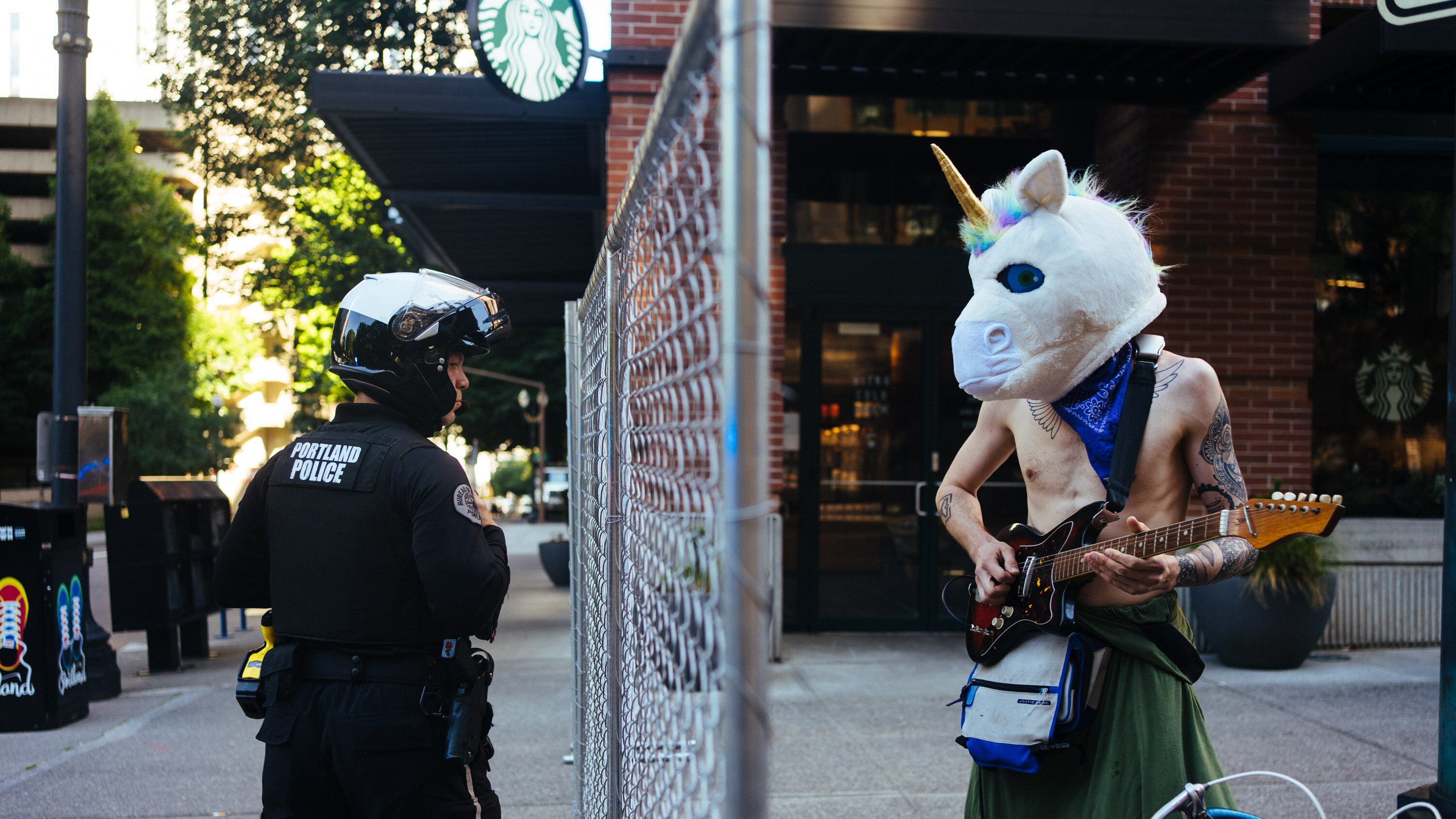In April 2020, the Portland Police Bureau stocked up.
That’s when the U.S. Department of Justice sent the bureau $1 million in COVID-19 relief funding, which it then used to keep officers socially distanced while flying in planes, to decontaminate squad cars, and to buy what appears to be some very fancy camera equipment.
The feds disbursed more than $847 million to 1,825 law enforcement agencies nationwide via the Coronavirus Emergency Supplemental Funding Program. The use of that money has been scrutinized in other cities—but not in Portland, where it received a brief mention in budget documents last fall but was never reported in the press until now.
Through a public records request, WW obtained copies of the Police Bureau’s grant application, signed by Mayor Ted Wheeler, and semi-annual evaluation reports the city submitted to the DOJ’s Office of Justice Programs.
The DOJ granted the funding weeks before the Police Bureau’s budget would shrink by $15 million in June 2020, and as it worked to further reduce its budget by an additional $5 million in accordance with a 5.6% budget cut across all city bureaus’ General Funds due to pandemic-related shortfalls. In that sense, the $1 million offered a slight cushion for the blow from local police defunding and COVID-related reductions.
But funding from the DOJ can have strings attached: In court cases stemming from protests dating back to July 2020, including an arson case settled last week, federal prosecutors cited both CESF funding and grants from the Office of Justice Programs—the source of the Police Bureau’s $1 million grant—as justification for asserting federal jurisdiction over city- and county-owned properties.
In its application, submitted last April, the Police Bureau said it planned to use the grant money almost exclusively for pandemic-related expenses. For the most part, it appears to have kept its word.
That said, the purchases the bureau made, or asked to make, are a revelatory shopping list. They offer a window into how police coped with the pandemic, how fully cops embraced remote work, and a few other details of bureau culture. Here are four notable purchases:
$178,840 for employee overtime
In its April 2020 application, the Police Bureau said the funding would provide a cushion for bureau employees “dedicated to preventing, preparing for, and responding to the coronavirus in the city of Portland.”
In its first semi-annual report, submitted to the DOJ in August, the bureau wrote that eligibility for overtime was designated to three specific categories:
• The bureau’s COVID-19 Incident Command Post.
• The Air Support Unit partnering model, “which
limited the in-person contact of flight teams with
precinct personnel.”
• “Patrol teams working with the houseless community.”
$88,580 for two “portable
decontamination units”
PPB wrote in its application that it wanted to purchase two such units at a cost of $44,290 each, as well as $45,000 for three “fogger decontamination systems”—one for each precinct—at a cost of $15,000 each.
“This expense will provide deployable decontamination capability for PPB,” the bureau wrote in its application. “Holding cells within the precincts and investigative units have already needed to be decontaminated because of sick arrestees.”
$127,500 for 50 laptops
In its application, the bureau asked for funding for 50 laptops at a cost of $2,550 per unit for teleworking employees.
“Every laptop in the bureau was deployed to a teleworking detective, crime analyst, or finance employee,” the application says. “The bureau placed their order for 50 laptops and docking stations with the goal of increasing the number of teleworking detectives thus decreasing personnel in bureau offices.”
In its semi-annual update submitted in August, the Police Bureau wrote that, because of the laptop purchases, telework had become “the new normal” for non-patrol employees, and that “several professional (non-sworn) units have transitioned out of their offices permanently.”
Supplies for the training division’s “Classroom Tracking Camera Project”
In its most recent semi-annual report, evaluating the period of July 1 to Dec. 31, 2020, PPB said the training division acquired supplies for a project which appears to set up a camera that would let officers conduct trainings while the camera followed them around the room. (PPB declined to explain the purpose of the project.)
The evaluation does not say how much grant money the bureau actually spent on the project. However, WW obtained an August 2020 purchase order specifically designated for the “Tracking Camera Project in 1927 Classroom,” which shows the bureau bought a $2,404 camera capable of livestreaming and “auto tracking.”
That same purchase order also shows receipts for a large hard drive, two pairs of earpads for headphones, and $2,400 paid to Getty Images for “Stock Images/Video/Illustrations/Music for online learning creation.”

